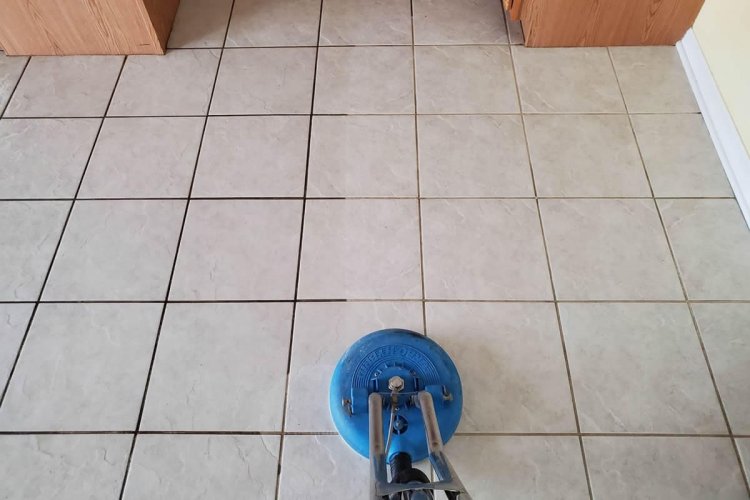Types Of Tile And Applicable Cleaning Method
Therefore, it is very important to understand the type of tile and the applicable tile and grout cleaning specials and methods.

The floor gets dirty now and then and it requires regular cleaning. Whether you hire someone to do it for you or you do it yourself, cleaning is a must! Cleaning is an essential part of chores. With it comes to the proper techniques involved in cleaning different kinds of floors, even a silly mistake can ruin your floor. Therefore, it is very important to understand the type of tile and the applicable tile and grout cleaning specials and methods.
Brick flooring
Brick is a porous substance. This means that you need to protect it with a wax film. This will keep the surface sealed. Vacuum the floor thoroughly and mop it. If you want to add extra shine to the floor, add a cup of vinegar to water and clean the floor with it. If you wish to remove the build-up, a wax stripper would work best with a solvent-based wax. Make sure that acids or abrasives are not used.
Concrete floors
Concrete easily catches stains as it is porous. Remove the dirt from the concrete floor before sealing it. It can be cleaned with an all-purpose cleaner. If oil spills on the garage floor, use kitty litter to absorb the oil or grease that has been spilt.
Asphalt tile
Asphalt tile requires special cleaning. Mop it every week by dissolving a cup of fabric softener in half-gallon of water. Do not flood the floor with water as it might loosen the adhesive. The marks in asphalt tile can be removed by steel wool. Liquid floor wax can be used for removing the drains easily. After rubbing, it can be wiped with a damp cloth.
Linoleum flooring
Before waxing, be sure to remove the dirt by vacuum and mop. A fine grade steel wool can be used to remove marks and buildup. If you are thinking of doing it with hot water, it is the worst you could do to a linoleum floor. Flooding with water, solvent-based products and scouring are enemies of linoleum. The most effective way to clean this floor by mopping with a damp cloth.
Ceramic flooring
The Glazed ceramic does not catch stain. If the ceramic is not glazed, it needs to be sealed as it is porous. Acids, strong cleaners or abrasives should be avoided at all costs. A mild cleanser can be used to clean it and then mop it with a soft dry cloth. This way you can finish ceramic tiles and grout cleaning in the best way.
Marble tile
If the marble is not polished, it will be porous. In this case, the tile needs to be sealed with a commercial sealer. You can mop it with water and a mild cleaner. If the tile is already polished, avoid using wax as it will make the tile more slippery. Fabric softener can also be used for a more thorough cleaning. It can be stripped occasionally, rinsed and the wax is reapplied.
Flagstone flooring and slate tile
A commercial sealer is a must for natural stone as it is very porous and rough in texture. Two thin coats of acrylic floor finish are applied on the slate tile. A lamb's wool pad can be used for this purpose. You can strip and rinse the floor occasionally. Moulding can be done with clear water or mild fabric softener.
Conclusion
Regular cleaning with a broom and mopping with a damp cotton cloth is the best option for the majority of floors. Use of very harsh solvents, acids and detergents must be avoided to maintain the shine, texture and polishing. When removing stains, vinegar and water can be used. This will never affect the shine and polishing of the floor.
Read More:- How To Clean Bathroom Tile And Grout?
 drseervi
drseervi 















